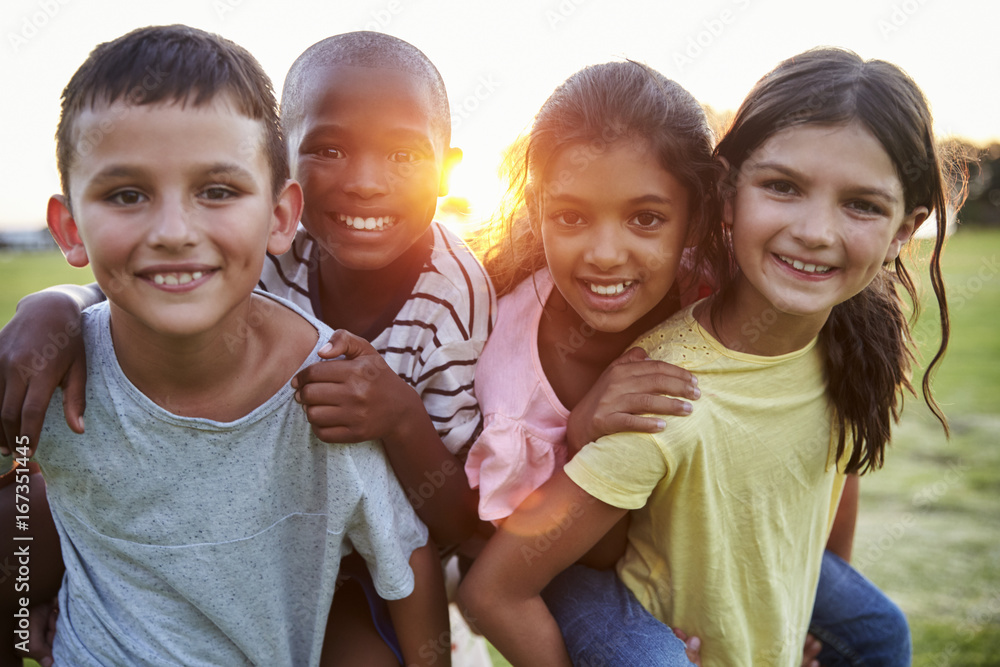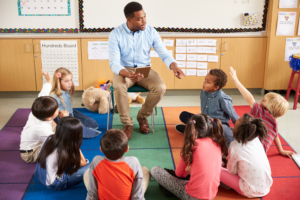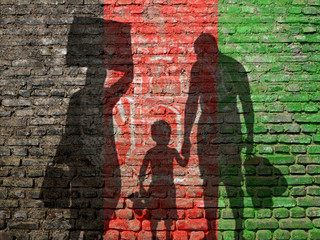By Cindy Simpson, Deputy Director of Children and Family Services for Lutheran Immigration and Refugee Service and Chris Purdy, Director of Veterans for American Ideals for Human Rights First and welcome council member of Welcome.US
In the 234 years since our constitution was ratified, America continues to evolve towards a more perfect union. Children of color are now the majority of students in our public schools, our suburbs and rural areas have become increasingly diverse, and landmark legislation has been signed into law, such as the legalization of gay marriage in 2015.
And of course, within the last two years alone, change in our everyday lives has developed at almost warp speed. The pandemic, the killing of Black Americans which sparked worldwide protests and resistance, and our own American political division have all amplified the social inequities inherent in our system. It’s also seemingly made us louder, angrier, and more prone to extreme counter-narratives, regardless of topic.
The next generation of Americans will look very different from the generations that have come before it. We know this. We also know that change is not coming easy for us as a country. There is a tug of war between where we stood and where we now stand, not made any easier by the current media landscape. And given where we stand, those of us who work with children, youth and families would be quite foolish to not recognize that our approaches and methods must also adapt to the current state of America today. And this adaptation must now include added amounts of trauma care for many students, families, and educators who are all experiencing trauma in real time.
The good news is there is much we can do to navigate these seismic shifts we are all feeling in early 2022. Our children and youth most especially can benefit if we recognize that they are living through much uncertainty and anxiety about all they are seeing, hearing, and experiencing. There is no question they must have robust supports today if we expect thriving adult citizens of tomorrow.
A few things that we believe are needed on a broad level:
- One area that needs more widespread traction and understanding is the mental health issues that is now recognized as a youth national crisis. But beyond the therapy needed for individuals, we believe that hand in hand with therapy adequate training of adults on these issues cannot be overlooked. Training of teachers, training of parents, training of the community must continue and even expand. Of course, there has been much talk of trauma and trauma informed care these days, but do we know what those terms mean? How do you spot it, deal with it, move beyond it when possible? Yes, therapy and more therapists to deliver the supports are absolutely needed (we are also big believers in the concept of mental health mobile units to support this work!) but without adult training to understand what they are seeing in their schools and communities, we are missing an opportunity to effect more holistic and lasting positive change down the road.
- Coupled with this, we as do many others, see an increase in violence happening in our schools. The boiling points just seem so much closer to the surface as our students have re-entered school buildings, some for the first time in a year and a half with scattered conditioning and support to help manage that transition. To counteract this, it is critical that the explicit and embedded lessons grounded in social emotional academic development continue. Students must be given the tools to understand their trigger points before episodes occur, so that small problems don’t escalate into bigger problems and so that students can learn, and teachers can teach. Teachers and administrators are working very hard to ensure that students stay in class but dealing with violent outbursts should not be a norm for an educator. They need the tools and the language and systems to support all their students and our students need the tools, language and systems that will lead them to better understanding of self and others. A social emotional academic learning approach in our schools and districts is foundational to success and should be the norm for American schools everywhere.
- Of course, our youth would say that they also must be a part of the conversation. Are we listening to what they are saying or are we offering platitudes in areas that have no real impact? Are we having ongoing, deeper conversations with them in our communities to find out why the violence seems to have ramped up, to dig in and examine how they are feeling and why? One approach to supporting these ongoing conversations is through a deeper collaborative approach among our many youth serving organizations. We both understand the competitive nature of organizations working on similar goals and funding to support more wide-spread collaboration is always a barrier, but so much good could come through a more coordinated approach to the work, at all levels. Both with youth voice and addressing community needs overall.
- Our nation must welcome and integrate those who come here by traditional and non-traditional means. Over the past decade, we’ve seen significant migration out of conflict zones caused, in part, by the actions of our own government. From the Syrian refugee crisis to the central American outflows to our southwest border, to Afghans who feel betrayed by American promises, the world looks to us to honor our commitments. Our government must welcome these individuals, respect our asylum laws, and grant refuge to those who seek it. But it is more than our government’s responsibility. Our communities and schools must live up to the warm welcoming spirit that they’re known for. And we must prepare these institutions to work with populations of children traumatized by conflict who now find themselves in our midst. We know that trauma can linger for children and youth as they grow into adulthood when they escape violence from their home countries, as detailed in the recent documentary FLEE. We as a country can have significant impact in helping children such as FLEE’s young Amin escape the horrors of their past by living up to our highest ideals.
- And finally, our last point that connects where we began. We are a diverse country. Change is happening at a rapid pace; when you look at the 2020 census, you see the diversity beyond our American cities and how it is happening across rural parts of our states. It is here. As a White woman and a White man both living different lives and experiences in this great country we call home, we both also understand that, for many people who come from our community, the first reaction to changes in the social order can be fear. Anything new and different can be frightening if you have never unpacked your own personal belief system and worked through any anxiety and fear you may have about others who don’t look, sound, or think as you do. It’s a reaction that has played out numerous times over the centuries of our republic. But as educators both in the traditional and non-traditional sense, the current ugliness around teaching the true version of America’s history, all within this rapid change happening is not only perplexing, but disturbing. We are parents (and one of us a grandparent) and it just feels wrong.
We believe that students, no matter race, identity, class, or culture should know the truth of our history. They need to know the very good things we’ve done as a country, but also that the US has been responsible for bad things as well. We are a country built on aspirations, not perfection, and our nation must constantly strive to be better while honestly dealing with its failures. We need to show our students the way a great country responds – through acknowledgement of both ends of that continuum so our students understand that a mark of being a powerful and great country is one who atones for past sins and looks ahead to solve the issues created from those sins. That’s true learning for the good and a model for individual behavior. Yes, such acknowledgement provides educators an important avenue for teachable moments about the contributions made and tribulations suffered, but also importantly, teaching full history can also go a long way in supporting a holistic trauma informed care approach by giving our students a sense of belonging and of being seen and valued for the skin and identity they live in.
We acknowledge this work is not easy. We see it firsthand in each of our current responsibilities working with immigrant and refugee children and families. But it is time to get education off the political platform and get it into reality. Our children and our future have no time to wait.












